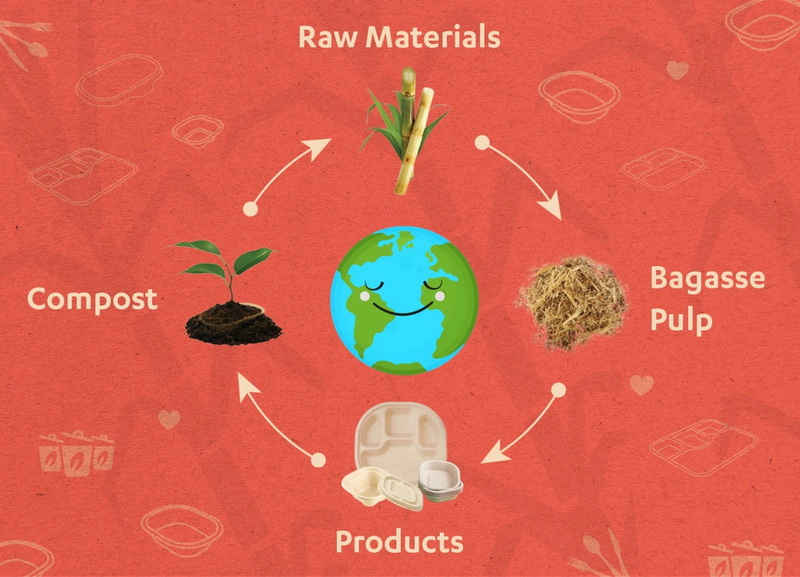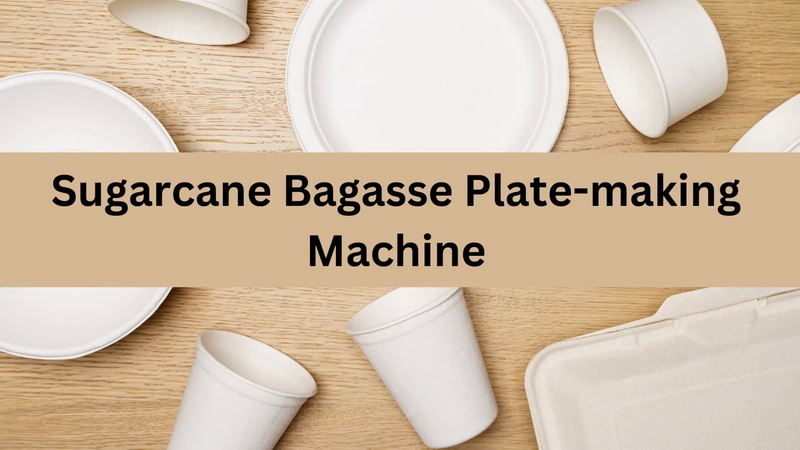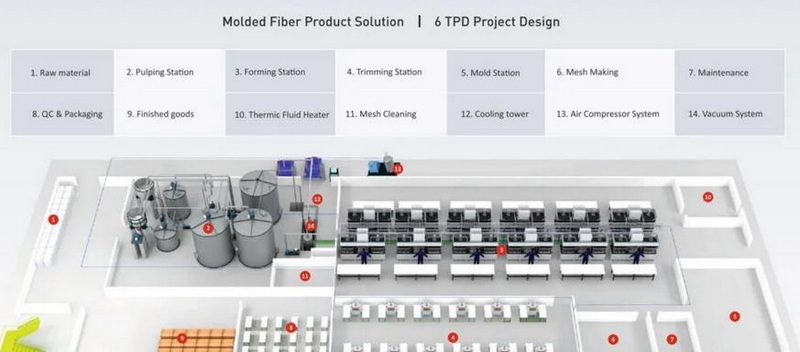
Content Menu
● The Raw Material: Sugarcane Bagasse
● The Manufacturing Process
>> 1. Collection and Cleaning
>> 2. Pulping
>> 3. Molding
>> 4. Pressing and Heating
>> 5. Drying
>> 6. Trimming and Finishing
>> 7. Quality Control and Packaging
● Benefits of Sugarcane Plates
● Environmental Impact
● Challenges and Considerations
● The Future of Sugarcane Plates
● How You Can Make a Difference
● The Growing Market for Sugarcane Plates
● Innovations in Production
● Customization and Branding Opportunities
● Global Impact and Adoption
● Conclusion
● FAQ
>> 1. How long do sugarcane plates take to decompose?
>> 2. Are sugarcane plates safe for food contact?
>> 3. Can sugarcane plates be recycled?
>> 4. How do sugarcane plates compare to paper plates in terms of environmental impact?
>> 5. Are there any drawbacks to using sugarcane plates?
● Citations:
In recent years, the global push towards sustainability has led to innovative solutions for everyday products. One such innovation is the creation of disposable plates from sugarcane waste, also known as bagasse. This eco-friendly alternative to traditional plastic or paper plates has gained significant popularity due to its biodegradability and renewable source material. In this comprehensive guide, we'll explore the process of transforming sugarcane waste into disposable plates, the benefits of this sustainable option, and its impact on the environment.

The Raw Material: Sugarcane Bagasse
Sugarcane bagasse is the fibrous residue left after sugarcane stalks are crushed to extract their juice. Traditionally, this waste product was burned or used as animal feed. However, innovative manufacturers have found a way to repurpose this material into eco-friendly tableware[1].
The Manufacturing Process
The journey from sugarcane waste to disposable plates involves several steps:
1. Collection and Cleaning
The process begins with the collection of bagasse from sugar mills. The raw bagasse is then thoroughly cleaned to remove any impurities or residual sugars[2].
2. Pulping
The cleaned bagasse is then converted into a pulp. This involves breaking down the fibrous material into a more uniform consistency, often using mechanical or chemical processes[2][4].
3. Molding
The bagasse pulp is then poured into molds of various shapes and sizes, depending on the desired final product. These molds can create plates, bowls, or other tableware items[2][4].
4. Pressing and Heating
The molded pulp is subjected to high pressure and heat. This process helps to remove excess moisture and bind the fibers together, creating a sturdy and durable product[2][4].
5. Drying
After pressing, the plates are dried thoroughly to ensure they maintain their shape and strength. This can be achieved through different methods, such as heat drying or air drying[4].
6. Trimming and Finishing
Any excess material is trimmed off, and the plates may undergo additional finishing processes to smooth edges or add design elements[4].
7. Quality Control and Packaging
The finished plates undergo quality checks before being packaged for distribution[4].
Benefits of Sugarcane Plates
Disposable plates made from sugarcane waste offer numerous advantages:
1. Biodegradability: Unlike plastic plates, sugarcane plates decompose naturally, typically within 60-90 days in a composting environment[5].
2. Renewable Resource: Sugarcane is a rapidly renewable crop, making these plates a more sustainable option compared to those made from non-renewable resources[3].
3. Reduced Carbon Footprint: The production of sugarcane plates generally has a lower carbon footprint compared to plastic alternatives[9].
4. Heat Resistance: These plates can withstand high temperatures, making them suitable for both hot and cold foods[1].
5. Microwave Safe: Many sugarcane plates are microwave-safe, adding to their convenience[5].

Environmental Impact
The shift towards sugarcane plates can have a significant positive impact on the environment:
- Reduction in Plastic Waste: By choosing biodegradable plates, we can significantly reduce the amount of plastic waste ending up in landfills and oceans[3].
- Conservation of Resources: Using agricultural waste reduces the need for new raw materials, conserving natural resources[9].
- Lower Pollution: The production process of sugarcane plates typically involves less pollution compared to plastic manufacturing[9].
Challenges and Considerations
While sugarcane plates offer many benefits, there are some challenges to consider:
1. Cost: Currently, sugarcane plates may be more expensive than traditional plastic or paper alternatives.
2. Availability: These plates may not be as widely available as conventional options in all regions.
3. Proper Disposal: To fully realize their environmental benefits, sugarcane plates need to be disposed of in composting facilities, which may not be available everywhere.
The Future of Sugarcane Plates
As awareness of environmental issues grows and technology advances, the future looks promising for sugarcane plates and other eco-friendly tableware options. We can expect to see:
- Increased production and availability
- Lower costs as production scales up
- Improved durability and functionality
- Greater variety in designs and sizes
How You Can Make a Difference
As consumers, we play a crucial role in driving the adoption of sustainable products like sugarcane plates. Here are some ways you can contribute:
1. Choose sugarcane plates for your next event or gathering
2. Educate others about the benefits of eco-friendly tableware
3. Properly dispose of sugarcane plates in composting facilities when available
4. Support businesses that use sustainable packaging and tableware
The Growing Market for Sugarcane Plates
The market for sugarcane bagasse plates is experiencing significant growth. According to recent projections, the bagasse dining ware market is expected to reach USD 322 million by 2029[8]. This growth is driven by increasing consumer awareness of environmental issues and a growing demand for sustainable alternatives to traditional disposable tableware.
Innovations in Production
As the demand for sugarcane plates grows, manufacturers are continually innovating to improve the production process and product quality. Some recent advancements include:
- Improved molding techniques for more intricate designs
- Enhanced heat resistance for a wider range of applications
- Development of coatings to increase water and oil resistance without compromising biodegradability
Customization and Branding Opportunities
Many manufacturers now offer customization options for sugarcane plates, allowing businesses to brand their eco-friendly tableware. This not only promotes the use of sustainable products but also provides a unique marketing opportunity for environmentally conscious companies[7].
Global Impact and Adoption
The adoption of sugarcane plates is not limited to a single region. Countries around the world are recognizing the potential of this eco-friendly alternative. In India, for example, many businesses and events are switching to bagasse tableware as part of a larger movement towards sustainability[10].
Conclusion
The transformation of sugarcane waste into disposable plates represents a significant step towards a more sustainable future. By repurposing agricultural waste into functional, biodegradable products, we can reduce our reliance on harmful plastics and minimize our environmental impact. As technology advances and awareness grows, sugarcane plates and similar eco-friendly alternatives are likely to become increasingly common, offering us a way to enjoy convenience without compromising our planet's health.

FAQ
1. How long do sugarcane plates take to decompose?
Sugarcane plates typically decompose within 60-90 days in a proper composting environment. This is significantly faster than plastic plates, which can take hundreds of years to break down[5].
2. Are sugarcane plates safe for food contact?
Yes, sugarcane plates are generally considered safe for food contact. They are free from harmful chemicals and are often approved by food safety authorities for use with various types of food[3].
3. Can sugarcane plates be recycled?
While sugarcane plates are not typically recycled in traditional recycling facilities, they can be composted in industrial composting facilities. Home composting may also be possible, depending on the specific product and composting conditions[7].
4. How do sugarcane plates compare to paper plates in terms of environmental impact?
Sugarcane plates generally have a lower environmental impact than paper plates. They require less energy to produce and come from a rapidly renewable resource. Additionally, sugarcane plates are often sturdier and more resistant to leaks than paper plates[9].
5. Are there any drawbacks to using sugarcane plates?
While sugarcane plates offer many benefits, they may be more expensive than traditional disposable plates. Additionally, they require proper disposal in composting facilities to fully realize their environmental benefits, which may not be available in all areas[5].
Citations:
[1] https://www.freshtableware.in/post/what-are-sugarcane-plates-and-how-are-they-made
[2] https://www.freshtableware.in/post/turning-sugarcane-waste-into-plates-investment-and-returns
[3] https://www.ecolates.com/blog/embracing-sustainability-the-advantages-of-sugarcane-bagasse-tableware
[4] https://chuk.in/how-bagasse-plates-are-made/
[5] https://redwingbioware.com/top-benefits-of-using-biodegradable-sugarcane-bagasse-plates/
[6] https://www.craftecopack.com/blog/from-raw-material-to-bagasse-plates-the-complete-manufacturing-process_b23
[7] https://foogogreen.com/blog/what-are-sugarcane-bagasse-plates/
[8] https://www.quitplastic.in/post/how-to-make-sugarcane-bagasse-tableware-from-sugarcane-pulp
[9] https://www.sumkoka.com/bagasse-plate-guide.html
[10] https://gangxuan-ecotech.com/bagasse-plates-manufacturing-process/

















